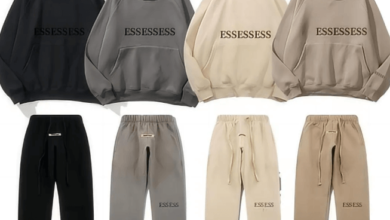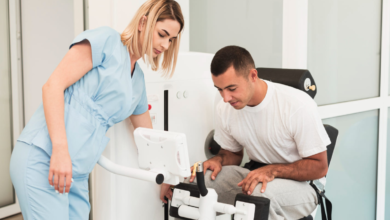What Are the Signs Your Baby Is Ready for Toys?

Babies grow rapidly, reaching milestones that prepare them for interaction with toys. Recognizing these signs is crucial for selecting toys that support development. Once your baby shows interest—through behavioral cues and improved skills—you can introduce safe toys that foster learning and exploration. This guide highlights the signs indicating toy readiness and offers expert recommendations for suitable choices.
Key Developmental Milestones That Signal Readiness
Understanding your baby’s developmental milestones helps determine toy readiness. As they grow, babies exhibit physical and cognitive improvements that signal interest in playtime.
Improved Head and Neck Control
A strong head and neck indicate readiness for toys. This milestone often appears around four months, allowing babies to hold their heads steady. Parents might notice that their baby scans surroundings, which is a go-ahead for introducing visually stimulating mobiles or toys. Such toys can aid skill strengthening and development.
Beginning to Grasp Objects
As hand-eye coordination advances, babies start to grasp items. This is typically observed by five months when babies begin to reach for toys and household objects. Stimulating their grasping ability with teething rings and rattles can enhance coordination. Offer toys that make noise or are easy to hold to encourage these burgeoning skills.
Increased Visual Tracking
A baby’s ability to follow moving objects hints at readiness for simple toys. Around six months, babies may track toys with their eyes, a sign cognitive perception is developing. Wind-up toys or those that feature movement are effective tools for augmenting visual tracking capabilities, sparking curiosity and focus.
See also: Gearing Up for Lifeguard Duty: Preparing for the End of Winter
Behavioral Cues That Show Toy Interest
Your baby’s actions provide clues about their emerging interest in toys. Observing these cues aids in selecting age-appropriate options.
Reaching Out and Touching Items
When your baby starts reaching for items, it suggests a readiness for toys. You’ll see this around five months, as they show curiosity about nearby objects. Introducing tactile toys, like soft blocks, can encourage exploration, ensuring they maintain interest while honing touch and grip abilities.
Smiling or Reacting to Bright Colors and Sounds
Babies often respond with smiles or excitement to vivid colors or sounds. This behavior emerges around four months, signaling interest in toys with such attributes. Opt for items with varying textures and engaging sounds to stimulate sensory exploration while keeping playtime enjoyable.
Following Objects with Eyes
Follow your baby’s gaze to gauge toy readiness. At about six months, babies track moving items, indicating visual development. Choosing toys that encourage eye movement and focus, like mobiles or visual projectors, can further support cognitive growth and curiosity.
How Age Influences Toy Readiness
Each age bracket offers different opportunities for introducing toys that align with developmental stages.
0–3 Months: Sensory Toys and Black-and-White Contrasts
In the first few months, high-contrast toys capture your baby’s attention. Black-and-white visuals help develop visual skills. Sensory toys, such as those with differing textures, engage and focus your baby’s perception. Select toys with gentle sounds or vibration for additional soothing and stimulation.
3–6 Months: Grasping and Teething Toys
From three to six months, babies enjoy toys they can hold or chew. Teething toys offer comfort while strengthening fingers. Soft rattles stimulate auditory senses. Introducing toys with textures encourages interaction, fostering curiosity and enhancing hand coordination as they reach and hold items.

6+ Months: Stacking, Activity Toys, and Crawling Toys
After six months, consider toys that support mobility. Stacking toys foster problem-solving and motor skills, encouraging exploration and creativity. Crawling toys inspire physical development, inviting movement. Activity tables provide sensory stimulation and challenge mental engagement as babies navigate features.
Safe Toy Features for Babies
Selecting safe toys ensures playful exploration without risk.
BPA-Free and Non-Toxic Materials
Prioritize toys made from BPA-free and non-toxic materials to guarantee safety. Babies often mouth or chew objects, making these materials crucial. Labels indicating absence of harmful chemicals offer peace of mind and secure a healthier play environment for your little one.
Size Matters: Avoid Choking Hazards
Ensure toys are large enough to prevent choking. Parents should verify size and shape of toys to avoid small parts that can pose dangers. Also, check for instructions or age recommendations confirming safety and compatibility with your baby’s developmental stage.
Smooth Edges and Durable Design
Select toys with smooth edges to avert potential injury. Durable construction withstands active play, enhancing longevity. Regular inspection ensures toys remain safe and intact, reducing threats from breaks or sharp parts. This guarantees continuous, worry-free play.
Choosing the Right Toy: Parent Checklist
Use criteria to select toys that contribute to your baby’s development.
Stimulates the Senses
Choose toys that excite senses—colors, sounds, textures engage your baby. These toys develop sensory understanding and cognitive perception. Items combining various sensory elements maintain interest, fostering interaction and mental growth.
Promotes Motor Skills
Seek toys enhancing motor skills. Items encouraging grasping, stacking, and movement help improve coordination. Interactive play supports dexterity and physical capabilities, preparing babies for further developmental phases.
Encourages Independent Exploration
Opt for toys enticing discovery. Independent exploration fosters confidence and problem-solving. Choose toys captivating your baby’s curiosity without constant guidance, promoting autonomous play and learning.
Expert Toy Recommendations
Based on expert reviews, these toys enrich your baby’s developmental journey.
Alilo Honey Bunny – Ideal for Audio Play and Soothing Sounds
Alilo Honey Bunny offers soothing melodies perfect for audio stimulation. Its design is secure for young hands, promoting calmness and sensory interaction. Light features enhance engagement while supporting relaxation, an excellent choice for tranquil playtime.
Soft Rattles, Teethers, and Tummy Time Mats
Soft rattles stimulate auditory senses. Teething rings relieve discomfort, catering to oral exploration. Tummy mats offer foundational support for rolling, plus interactive features that attract attention and preparation for crawling. These essentials aid comprehensive developmental growth.
ConclusionSure!
Watching your baby’s milestones unfold is exciting, signaling readiness for toys that aid development. As many parents start to wonder when do babies play with toys, it often coincides with improved posture, grasping, and behavioral cues—clear signs they’re ready to explore. These stages guide toy choices that stimulate curiosity and growth. Prioritize safety and exploration in each selection, ensuring toys align with developmental stages. Expert guidance refines options that secure nurturing and learning through thoughtful play.




